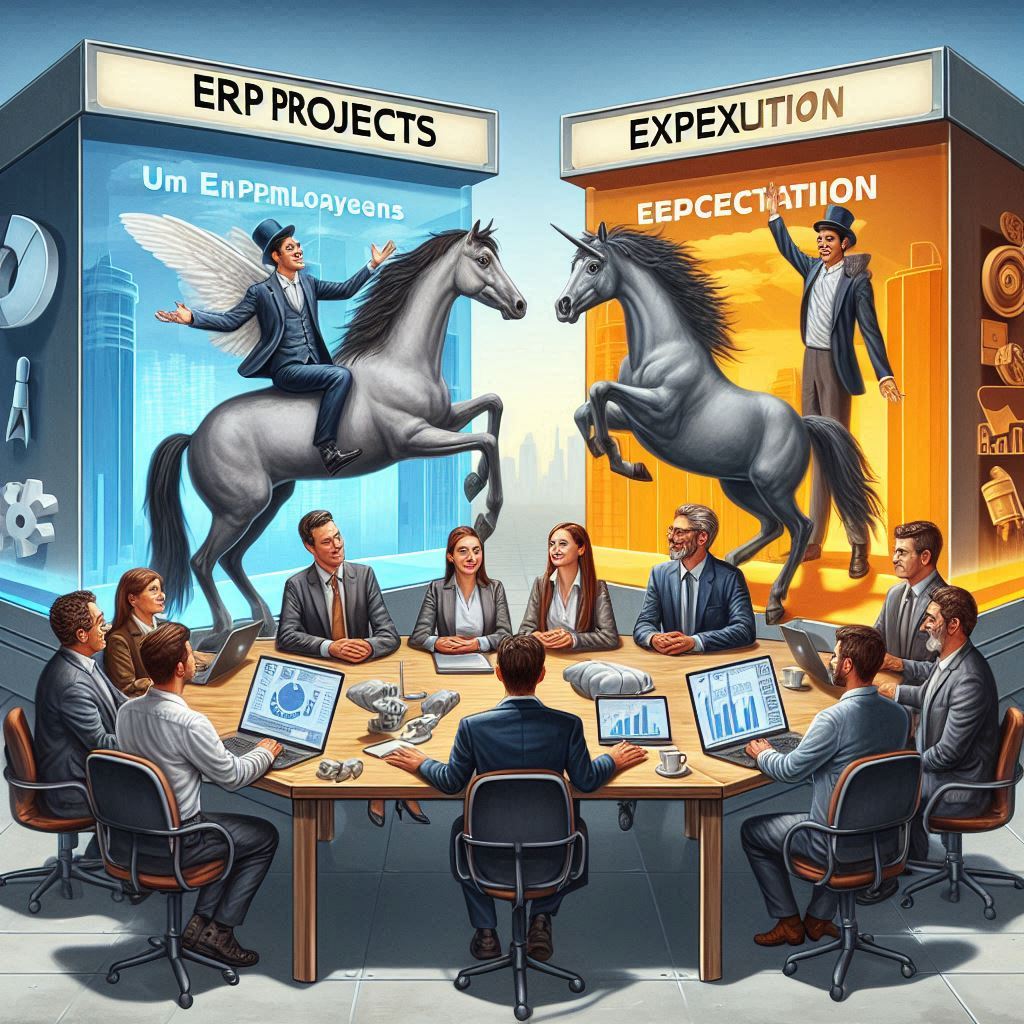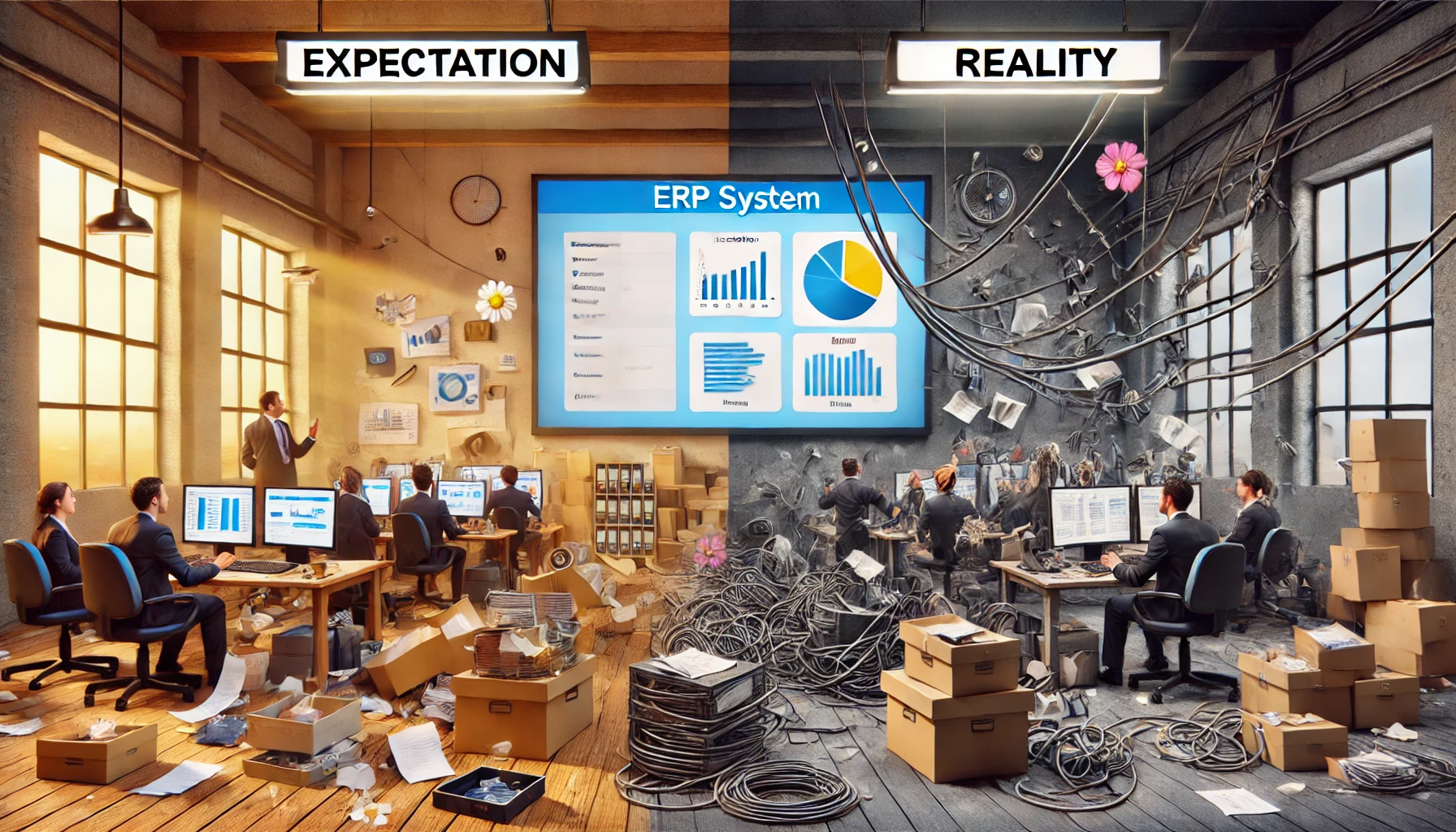In today’s world, many of us engage with social media platforms where people use filters and special apps to present the best version of themselves. However, when meeting in real life, the person may not look anything like their curated images, leading to disappointment. The same thing can happen with Enterprise Resource Planning (ERP) projects. During presentations and demos, everything can look flawless, but the reality during implementation can be far more complex and challenging, often leading to disappointment and frustration.
The Gap Between ERP Expectations and Reality
When presenting an ERP system, everything typically appears seamless. The product demo shows how the software will address every need of the business perfectly. However, once the system is implemented, the process can be much more painful and time-consuming than expected. ERP projects, due to their complexity and scope, often exceed both budget and timeline. This gap between expectation and reality can lead to significant frustration for businesses.
Just like on social media, first impressions of an ERP system can be impressive, but as the project progresses, the true challenges of the software emerge. In many cases, businesses realize that the chosen ERP system doesn’t fully meet their needs, resulting in significant costs and operational disruptions.

Lessons from Major Failed ERP Projects
Several large-scale ERP projects have failed spectacularly, serving as valuable lessons for businesses. Here are a few notable examples:
- Hershey’s ERP Project (1999): Hershey implemented a major ERP system but made critical errors during the process. The go-live date was set during their busiest sales season, which resulted in significant issues. As a result, Hershey faced a loss of nearly $100 million in sales. The failure was largely due to poor planning and timing.
- Lidl ERP Project: Lidl, one of Europe’s largest retailers, invested around 500 million euros into an ERP project that spanned over seven years. In the end, the project was scrapped entirely. The failure was attributed to data inconsistencies and a communication breakdown between management and the project team.
- Waste Management: In 2005, Waste Management undertook a major ERP project but faced massive challenges throughout the implementation. The system failed to meet the promised features, and integration issues arose, leading to millions of dollars in losses for the company.
Conclusion: Evaluating ERP Systems the Right Way
When selecting an ERP system, it’s crucial to focus on the company’s needs rather than being swayed by the product’s price or popularity. Every industry and company has unique requirements, so the following factors should be considered when choosing an ERP solution:
- Business Needs: Analyze your business’s operational requirements and evaluate how well the software can address these needs.
- References: Look at case studies and feedback from other companies in your industry that have implemented the ERP system.
- Flexibility and Scalability: Assess whether the ERP system can adapt to future changes and growth plans within the company.
ERP implementations are significant investments, and their return depends on choosing the right system and executing it effectively. Ultimately, the best ERP solution isn’t necessarily the most popular or expensive, but the one that fits your company’s needs and industry demands.


